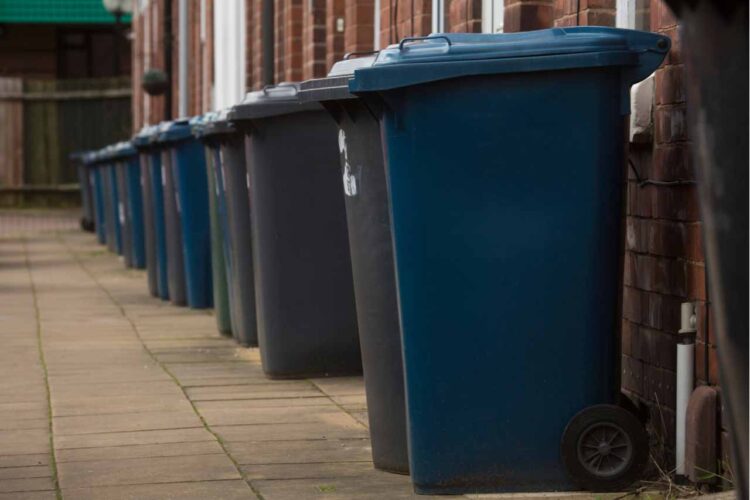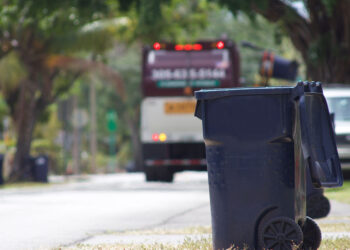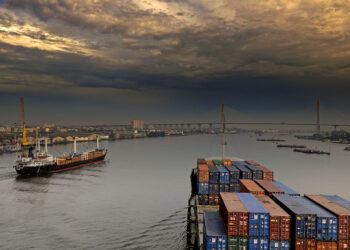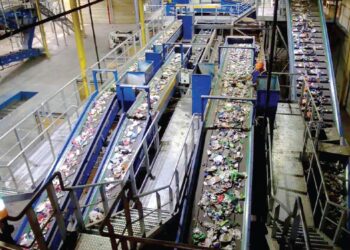Two municipal officials and a Plastics Pact representative shared tips for moving away from a “make, take, waste” framework during a recent webinar. Public-private partnerships and system redesigns were two of the ideas shared.
The Feb. 9 Solid Waste Association of North America (SWANA) webinar “Advancing the Circular Economy in Your Community” brought together Garance Boullanger, a junior project manager of the Plastics Pact Network with the Ellen MacArthur Foundation, Susan Fife-Ferris, city of Seattle solid waste planning and program management director, and Amanda Jordan, city of Phoenix circular economy project manager.
Boullanger said a “fundamental redesign of the system, the product and its packaging” is needed to reach a circular economy.
“We won’t be able to recycle our way out of the plastics crisis we currently face,” she said, because there is “too much plastic packaging in the market to be able to close the loop.”
Boullanger shared three main principles to get to a circular economy: eliminating unneeded plastic packaging, innovating new methods and plastics for needed items, and ensuring that no plastic is lost during processing.
“We need to innovate so the plastics we do need – because we do need plastics – are reusable, recyclable or compostable and fit within a plastic packaging system,” she said.
Making sure that all packaging is reused, recycled or composted in practice is also vital, she said, to make sure “all the plastic packaging in the economy stays in the economy and does not go into the environment.”
Seattle is working toward that goal by banning recyclables and organics from garbage cans, Fife-Ferris said.
The city accomplished that using its solid waste plan and framework, to “move away from a take, make, use and waste linear economy approach and to a circular economy with a holistic view,” she said.
“We need to innovate so the plastics we do need – because we do need plastics – are reusable, recyclable or compostable and fit within a plastic packaging system.” – Garance Boullanger, Plastics Pact Network
In Arizona, Phoenix had a goal of reaching 40% diversion from the landfill by 2020. Amanda Jordan, the city’s circular economy project manager, said the city reached 36% before COVID-19 interrupted operations.
That goal was part of the Reimagine Phoenix project, which also aims to enhance solid waste services, expand education, outreach and engagement, and foster more public-private partnerships.
One such effort is the Resource Innovation and Solution Network (RISN), a partnership with Arizona State University to create a circular economy in the Phoenix metro area. It launched in 2014.
In 2017, the city launched a business incubator under RISN. Between 2018 and 2020, when the pandemic stalled the project, Jordan said the RISN incubator worked with 19 companies, raised $3.72 million in capital and generated $4.14 million in revenue.
It helped create 68 jobs and 55 internships, and it resulted in 14 patents filed and 25 products launched.
“At the time, it was the first circular economy incubator in the country,” Jordan said. “Since then more have launched, which is exciting.”
Moving forward, Boullanger said the Ellen MacArthur Foundation is continuing to unite organizations behind its shared vision and shared definitions and is working on solutions.
“We need to have a common vision, but the way to get there on the ground will need to be different,” she said, as different countries need tailored investments and infrastructure.
The foundation is starting to see positive changes. Boullanger said since 2018 the use of virgin plastics in packaging seems to have peaked in brands that are signed up with the foundation. There has been a 2% reduction to date and she projected a 17% reduction in coming years.
“We own our waste, so we can provide this unique opportunity to startups, more established Fortune 500 companies and anyone in between who is looking to help us with our waste diversion goals.” – Amanda Jordan, city of Phoenix
In Phoenix, Jordan said the city is expanding a successful curbside cart tagging program to reduce contamination and is working to build a resource innovation campus on 40 acres.
There, businesses will be able to lease space and easily collect waste coming through the transfer station to use as feedstock.
“We own our waste, so we can provide this unique opportunity to startups, more established Fortune 500 companies and anyone in between who is looking to help us with our waste diversion goals,” she said.
Jordan said a 2018 study found that the potential impact of full transition to a circular economy in the city would generate an additional $124 million in gross state product. It would also mean over 34,000 total tons of recycled material diverted and 55 new jobs at facilities.
“We have to find ways to make stakeholders accountable,” she said. “Everything here has to be voluntary, so we have to be really creative in what we can do and find ways to hold each other accountable.”
“Bringing us all to the table to talk and influence each other and develop those relationships, that helps us understand all the different issues we are all experiencing. When you talk you can come up with solutions.” – Susan Fife-Ferris, city of Seattle
Seattle is piloting a reusable cup program at entertainment and sports venues. Fife-Ferris said Reuse Seattle is a public-private partnership that will install collection systems and wash infrastructure at venues for use with a standardized plastic cup.
The city is also supporting extended producer responsibility (EPR) and right-to-repair efforts, mandates for post-consumer resin (PCR) content and increasing compost distribution to farms.
Fife-Ferris said an important part of progress toward a circular economy is regularly getting all stakeholders together.
“Bringing us all to the table to talk and influence each other and develop those relationships, that helps us understand all the different issues we are all experiencing,” she said. “When you talk you can come up with solutions.”



























